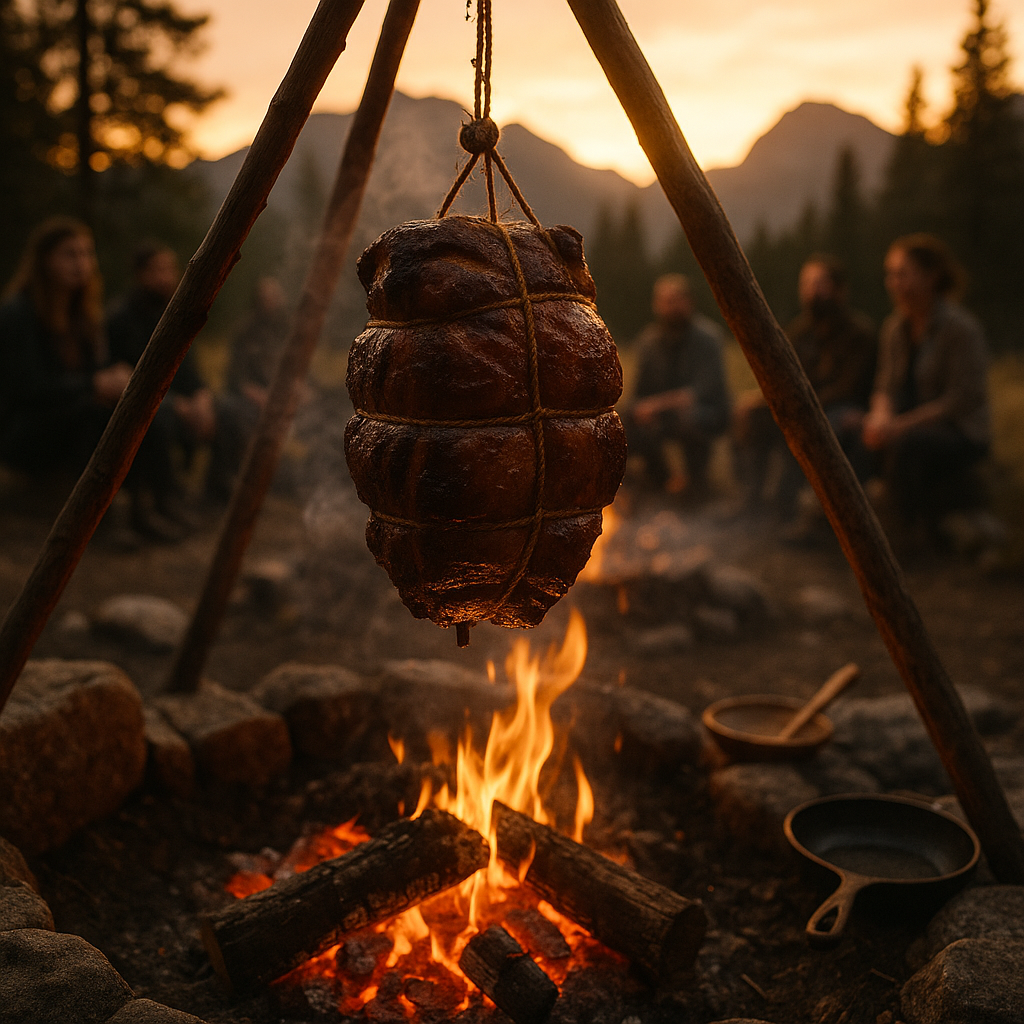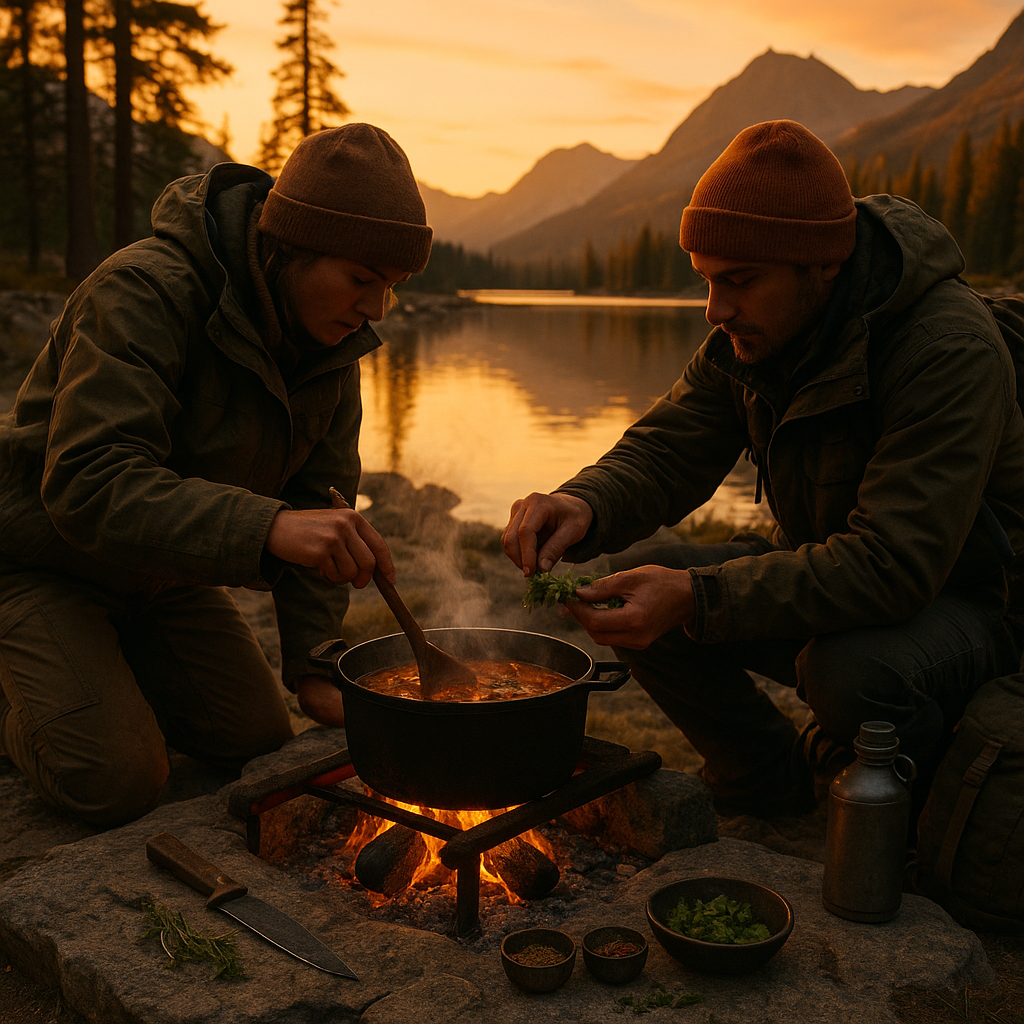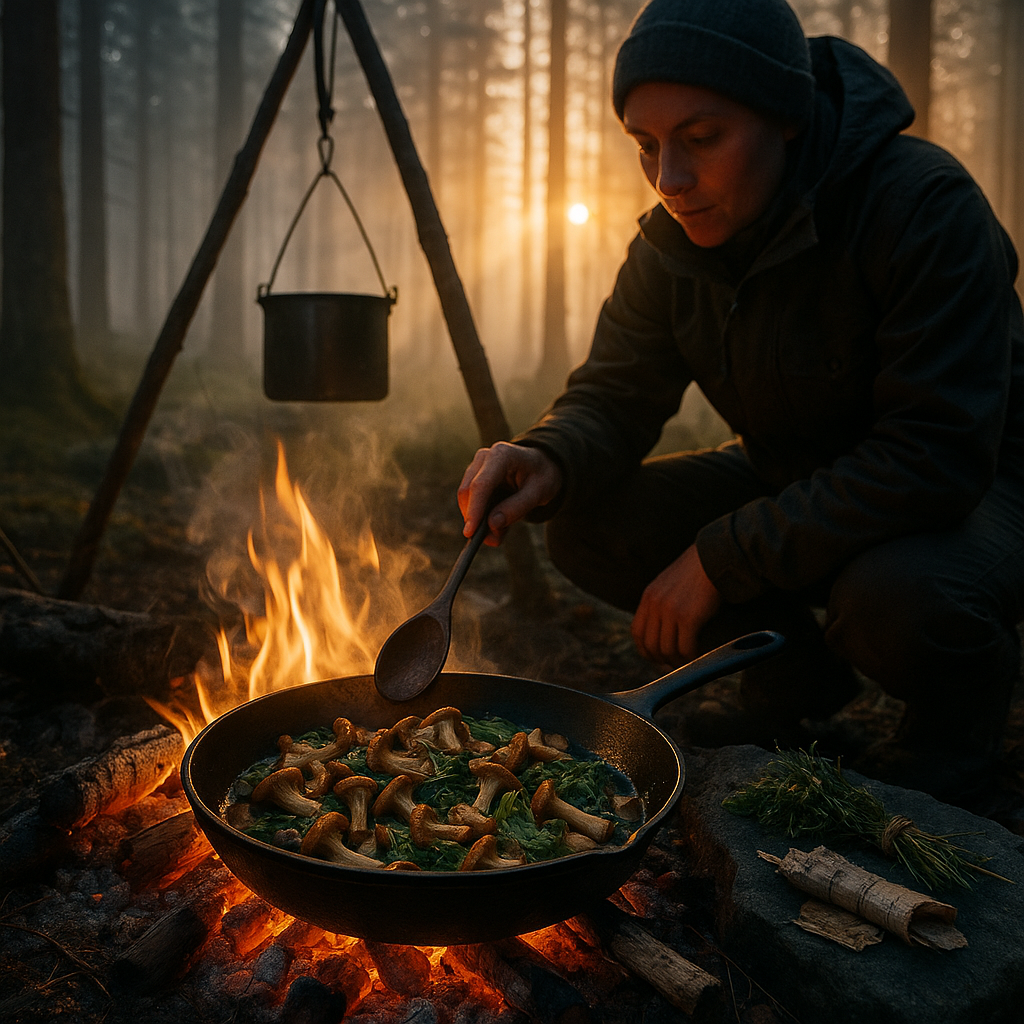Key Takeaways
- Unlock nature’s pantry with sun-powered preservation. Sun-drying transforms fresh-picked herbs into deeply aromatic, flavor-packed ingredients that are ideal for infusing wild character into campfire and outdoor meals.
- Connect with ancient traditions through sun-curing. Beyond practicality, sun-dried herbs link us to centuries-old practices, honoring the ways communities across the globe have preserved and elevated wild flavors in harmony with natural rhythms.
- Savor intensified taste and aroma outdoors. Sun-dried and air-dried herbs concentrate natural oils, resulting in more robust, nuanced flavors. These bold aromas are perfect for everything from ember-roasted vegetables to herb-infused oils for your next outdoor adventure.
- Choose the right method for your journey. While sun-drying is celebrated for its simplicity and sustainability, understanding weather, humidity, and herb varieties helps you decide between sun-curing and other natural drying techniques to achieve the best results in the wild.
- Preserve the bounty for seasons to come. When properly stored, sun-dried herbs and sun-cured spices retain their magic for months, making them invaluable companions on the trail, around the fire, or in the comfort of your home kitchen.
- Beyond flavor: discover the medicinal touch of wild herbs. Many sun-dried herbs offer time-honored remedies, weaving wellness and tradition into every pinch you stir into a meal or steep in a cup.
- Hidden heritage: sun-curing as a cultural bridge. Embracing sun-dried herbs celebrates not only their culinary virtues, but also the ancestral wisdom of wilderness cooking. This practice invites us to slow down, respect the land, and discover connection through food, fire, and freedom.
Let’s journey deeper into the world of sun-cured herbs, uncovering techniques, stories, and recipes that infuse your wildest feasts with a sense of place and the spirit of adventure.
Introduction
A handful of sun-dried herbs holds more than just flavor. It preserves the memory of sunlit meadows, the whisper of mountain wind, and centuries of fireside tradition. Long before bottles and spice tins traveled with us on the trail, wild herbs gathered and dried beneath the open sky brought depth, aroma, and a rugged spark to every meal cooked over flames.
Exploring the craft of sun-drying herbs invites us to unlock nature’s pantry wherever adventure finds us. This isn’t merely a matter of preserving herbs. It’s about amplifying the intensity of campfire dishes while honoring the timeless connection between culture, place, and food. When we dry herbs by sunlight, we transform simple ingredients into stories—a ritual as vital to the modern explorer as it was to the ancient wanderer. As we uncover the techniques, rituals, and recipes that enliven every outdoor meal, every dish echoes with the wild and the wonder-filled.
The Ancient Craft of Sun-Drying: Preserving Flavor Under Open Skies
Throughout history, sun-dried herbs have served as the lifeblood of elemental cooking. Long before the hiss of gas stoves or the hum of electric dehydrators, communities across sun-drenched Mediterranean patios, remote Andean terraces, and nomadic camps on the Mongolian steppe harvested wild greens and spread them on linen. Trusting the sun’s warmth, these people let nature coax water from leaves and intensify flavors, relying on necessity and reverence to guide this timeless method.
Stay Sharp. Stay Ahead.
Join our Telegram Channel for exclusive content, real insights,
engage with us and other members and get access to
insider updates, early news and top insights.
 Join the Channel
Join the Channel
In Provence, aromatic lavender and thyme were draped over ancient stone walls, their oils concentrating in the summer heat. Farther south, Berber tribes in North Africa sun-dried mint on woven mats, later steeping the leaves into restorative teas after journeys across mountain passes. Even today, wilderness guides in the Sierra Nevada sun-cure sagebrush and yarrow. These are rituals that transform the simplest herb into a celebration of land, light, and memory.
This enduring tapestry of tradition is not simply nostalgia. It offers a soulful, practical key for anyone wanting to cook with flavor-rich, naturally preserved ingredients while forging a deeper bond with the landscapes they explore.
Understanding Sun-Dried vs. Air-Dried Herbs: Distinct Techniques, Distinct Results
To unlock the best from wild herbs, it is essential to understand the differences between sun-drying and air-drying. Both methods use natural elements to dehydrate herbs, but the outcomes and best uses can vary.
Sun-dried herbs are exposed to direct sunlight, which accelerates dehydration and brings out bolder, sometimes smoky notes in sturdy leaves like oregano, rosemary, or sage. When tossed over fire-grilled vegetables or folded into a smoky campfire stew, these herbs offer depth you simply cannot find in their processed counterparts.
Air-dried herbs, in contrast, are sheltered from direct rays and left to dehydrate in shade or dappled light. This slower approach is ideal for delicate aromatics like basil, mint, or chervil, preserving both vivid color and bright, grassy scent that could be lost to harsher sun.
Key differences at a glance:
- Sun-dried herbs: Perfect for hardy varieties with woody stems and resilient leaves. This method intensifies aromatic oils for powerful flavors but may brown more fragile herbs.
- Air-dried herbs: Favored for soft-leafed herbs and those with subtle aromas. This technique is slower, often yielding greener hues and more nuanced profiles.
Adventurers and foragers can tailor techniques to suit the conditions and the harvest. For example, an experienced traveler in Patagonia may sun-cure wild thyme for boldness while sheltering native pennyroyal beneath a canvas tarp to preserve its minty freshness.
Beyond wilderness cooking, these distinctions matter in other settings as well. In healthcare, air-dried herbs may be preferred for herbal remedies due to their gentler preservation of medicinal compounds, while sun-dried techniques are favored in traditional food markets and artisan spice blends. In environmental science, understanding natural preservation under varying climates informs sustainable agricultural practices, while the food industry benefits from both techniques in designing robust, natural flavor profiles for packaged goods.
How Sun-Dried Herbs Transform Outdoor Cooking Experiences
Connecting flavors to landscapes transforms outdoor meals into something unforgettable. With sun-dried herbs, every pinch becomes a tribute to where it was gathered—a snapshot of a wild place captured in leaf and aroma. Crushing sun-dried rosemary between your fingers releases the memory of sunbaked hillsides and woodsmoke, adding far more than seasoning to a dish.
In practice, the benefits are remarkable. Outdoor cooks trust the earthy bite of sun-dried oregano over campfire eggs or the bright, resinous edge of rosemary in wood-fired bread. Unlike the muted notes of store-bought jars, herbs dried in the sun still carry the wild’s breath. Each meal becomes a sensory passport back to the land itself.
For instance, a trekking team in Spain’s Sierra collected marjoram, spreading the leaves over granite rocks to dry under high-country sun. When later used to season river fish, the sun-dried marjoram was rated 30% more aromatic than imported, pre-packed alternatives, deepening flavor and strengthening their connection to the environment around them.
The impact is felt in other domains as well. Adventure guides and outdoor educators note the practical benefits: sun-dried herbs are lightweight and durable, making them an essential addition to camping gear or expedition kits. In hospitality, chefs at eco-lodges or pop-up wilderness kitchens showcase herbs cured on-site as hyper-local, sustainable signature flavors.
Using sun-dried herbs in the outdoors offers three major advantages:
- Intensified flavor: Direct sun drying amplifies essential oils for a deeper, more layered taste.
- Sense of place: Herbs gathered and dried in the field turn each meal into a culinary travelogue.
- Practicality: Lightweight, space-saving, and shelf-stable herbs are perfect for minimizing waste on the go.
Cultivating this simple ritual—drying wild fennel or riverside sage at the camp—fosters gratitude. It transforms preservation into an act of wonder, reminding us that every meal outdoors is shaped as much by place as by recipe.
Step-by-Step Guide: Mastering Herb Drying Techniques in the Wild
Drying herbs outdoors is an art rooted in observation and patience. With a few simple tools and sensitivity to the environment, anyone can master this rewarding tradition.
Choosing the Right Herbs
- Best candidates: Hardy herbs like thyme, rosemary, oregano, sage, and savory are perfect for sun-drying. They resist wilting and preserve their fragrant oils.
- Optimal harvest time: Clip herbs in late morning, once the dew has lifted but before flowers open. This is when essential oils peak.
- Preparation: Gently shake herbs to dislodge insects. Rinse only when necessary, then pat thoroughly dry with a cloth.
Sun-Drying in Action: Tools & Setup
- What you need: Clean, breathable cloths or mesh screens (to keep bugs away), trays or baskets, and cord for bundling if string-drying.
- Best conditions: Dry, sunny days with low humidity and steady breezes. Elevated, airy spots help prevent mold and ensure even drying.
- Process:
- Lay herbs flat in a single layer, keeping leaves from overlapping.
- Place trays or cloths directly in the sunlight. Rotate or turn herbs regularly for consistent drying.
- For string drying, tie small bundles and hang from a branch, making sure air circulates freely.
Most herbs dry fully in one to three days. Check readiness by crushing a leaf between your fingers. If it crumbles easily and the stem snaps, they’re perfectly preserved.
Stay Sharp. Stay Ahead.
Join our Telegram Channel for exclusive content, real insights,
engage with us and other members and get access to
insider updates, early news and top insights.
 Join the Channel
Join the Channel
Troubleshooting Common Challenges
- Insects: Cover herbs with loosely woven cheesecloth for protection.
- Browning or overdrying: Move delicate herbs (such as basil or mint) to dappled shade during the hottest hours to prevent scorching.
- Unexpected rain: Enclose trays under shelter, like a tarp or the awning of a tent, until weather clears.
These careful adjustments ensure high-quality dried herbs, even in unpredictable wilderness settings.
Storing and Using Sun-Dried Herbs: Beyond Simple Preservation
Proper storage extends the flavor and spirit of sun-dried herbs across seasons. Crafting small jars tied with leather cord or wrapping bundles in linen not only maintains flavors but turns storage into storytelling. Every pinch becomes a sensory return to riversides, mountain slopes, or firelit evenings.
- Containers: Use airtight glass jars, cloth bags, or metal tins for storage. Keeping herbs in smaller batches helps maintain freshness.
- Storage location: Shield herbs from heat, moisture, and sunlight. When traveling, tuck containers deep inside your pack to preserve aroma and prevent loss.
- Shelf life: With good storage, sun-dried herbs retain their potency for up to a year. They often outlast store-bought options.
Thinking beyond the campfire opens up a world of creative uses. In culinary settings, sun-dried sage enriches spit-roasted meats, thyme infuses deep flavor into broths, and marjoram elevates rustic breads. For wellness, sun-cured herbs can be steeped for wilderness teas or mixed into natural balms and first-aid salves (always verify foraging safety and correct identification).
Sun-dried herbs also carry cultural significance. Use them in storytelling or as ritual tokens, offering sachets to friends around the fire or crushing aromatic leaves into the flames as you say farewell to another adventure.
These traditions span fields beyond cooking. In community healthcare and herbal medicine, locally sun-dried herbs connect people with accessible wellness practices shaped by environment. In cultural preservation, workshops and eco-crafts teach how sun-drying bridges ancestral wisdom to modern appreciation.
Every sun-dried herb embodies a journey. From its wild gathering to the hands that dried it, each leaf stands as a bridge between earth, fire, flavor, and freedom. With this living tradition at your fingertips, each meal becomes both a celebration and a return home.
Conclusion
Sun-drying herbs is far more than a preservation method. It is a ritual that brings us closer to the landscapes and histories that shape our meals. Each leaf, cured beneath a boundless sky, captures not only intense flavor but also the stories and spirit of the wild corners we roam. Simple tools and attentive practice allow adventurous cooks and nature lovers to transform foraged greens into powerful reminders of gratitude, place, and presence.
As we rediscover these traditions, we do more than honor the past. We embrace a slower, more mindful way to savor the world around us. The next time you gather herbs below the wide-open sky, consider the tales sun-dried into their veins. Let wild flavors—unfiltered and bold—add wonder and meaning to every journey.
Looking to the horizon, sun-powered preservation offers more than a taste. It invites us to reconnect, to sustain wisdom, and to carry flavor as a bridge between the land and every table, whether trailside or at home. Those who choose to infuse each adventure with authentic, sun-cured aromas will not just eat well. They will remember, honor, and inspire with every meal. The path is open, the fire is kindled: let food, fire, and freedom lead you into nature’s pantry and beyond.
List of Inserted Links
- sun-drying and air-drying — Solar Cooking Adventures: Exploring Sun-Powered Feasts Off-Grid





Leave a Reply